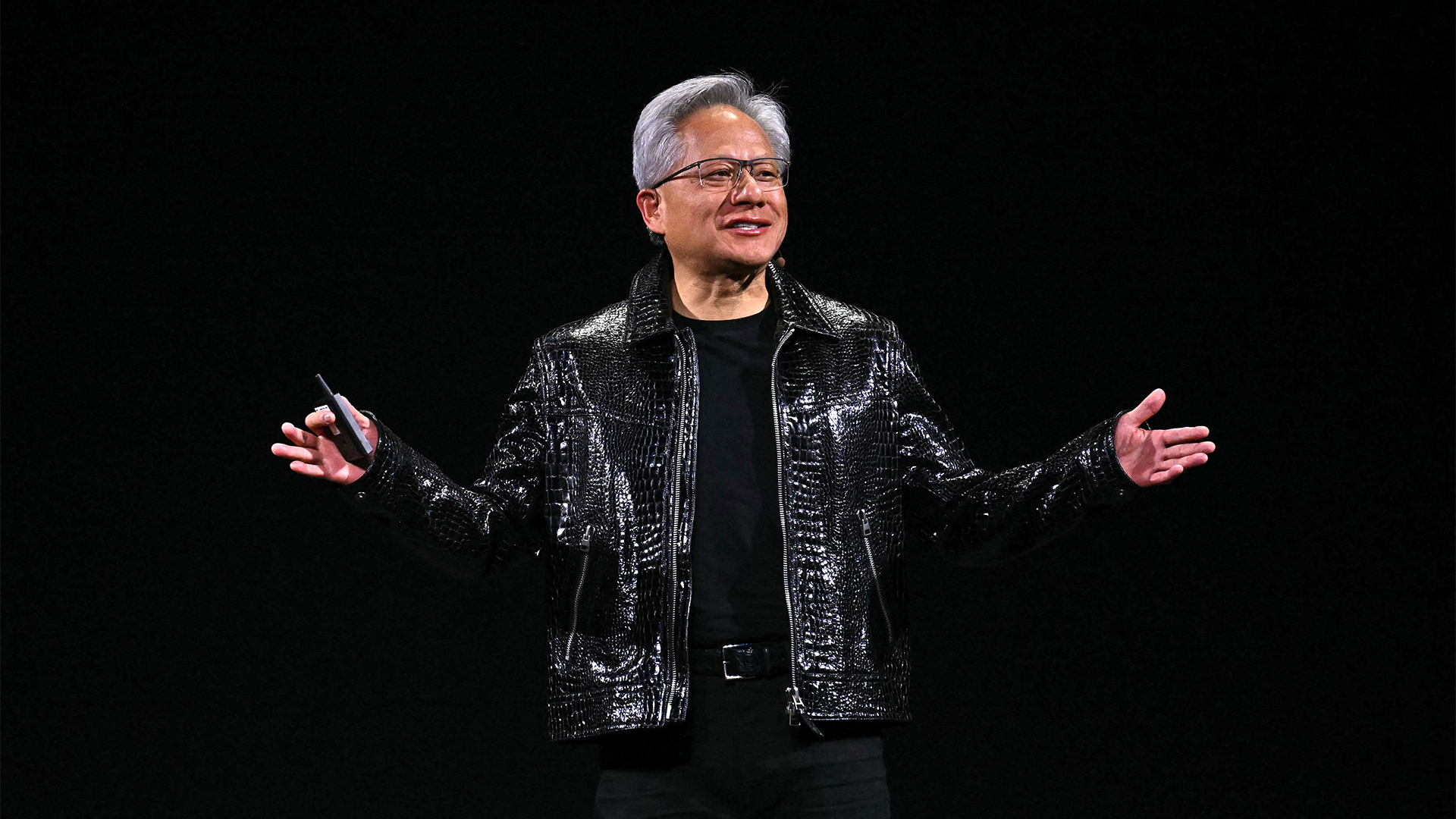7 most powerful computers of all time
These behemoths can crunch through numbers like nothing else


Supercomputers have held a position of huge esteem within the technology space. They are used for many things, including climate modeling, disease research, and nuclear science.
They are also used to run complicated simulations that involve many variables. Recently, supercomputers have been used to track the spread and mutation of the coronavirus.
Supercomputers are often ranked in terms of the number of computations per second. These so-called TeraFLOPS are units of computing power equal to one trillion (10¹²) floating-point operations per second.
What are the most powerful computers of all time? Find out below.
1. Fugaku
Location: Riken Center for Computational Science, Japan
Cores: 7,630,848
Memory: 5,087,232 GB
Get the ITPro daily newsletter
Sign up today and you will receive a free copy of our Future Focus 2025 report - the leading guidance on AI, cybersecurity and other IT challenges as per 700+ senior executives
Processor: A64FX 48C 2.2GHz
Peak performance: 537,212 TFlops
This supercomputer, developed by Japan's state-backed Riken research institute, is the world's fastest for computing speed. named Fugaku after Mt. Fuji, this computer was jointly developed with Fujitsu Ltd. at the institute's facility in Kobe. It is currently involved in researching potential medicines to fight coronavirus.
2. Summit
Location: DOE/SC/Oak Ridge National Laboratory, US
Cores: 2,414,592
Memory: 2,801,664 GB
Processor: IBM POWER9 22C 3.07GHz
Peak Performance: 200,795 TFlops
Summit, launched in 2018, uses 4,608 computing nodes, each containing multiple IBM POWER9 CPUs and Nvidia Volta GPUs connected with Nvidia’s high-speed NVLink. Each node has over half a terabyte of coherent memory. The computer solves complex tasks in energy, artificial intelligence (AI), human health, and other areas of research.
3. Sierra
Location: DOE/NNSA/LLNL, US
Cores: 1,572,480
Memory:1,382,400 GB
Processor: IBM POWER9 22C 3.1GHz
Peak performance: 125,712 TFlop/s
This IBM-built supercomputer combines two types of processor chips — IBM’s Power 9 processors and Nvidia’s Volta graphics processing units. Nuclear weapon scientists use it in nuclear weapons simulations in place of underground testing.
It helps assess the performance of nuclear weapon systems as well as nuclear weapon science and engineering calculations.
4. Sunway TaihuLight
Location: National Supercomputing Center in Wuxi, China
Cores: 10,649,600
Memory: 1,310,720 GB
Processor: Sunway SW26010 260C 1.45GHz
Peak Performance: 125,436 TFlop/s
This Chinese supercomputer features 40,960 Chinese-designed SW26010 manycore 64-bit RISC processors based on the Sunway architecture. Each processor chip contains 256 processing cores.
The name is translated as divine power, the light of Taihu Lake. From June 2016 to June 2018, it was the world's fastest supercomputer. The computer is involved in climate, weather and earth systems modeling, life science research, advanced manufacturing, and data analytics.
5. Perlmutter
Location: DOE/SC/LBNL/NERSC, US
Cores: 706,304
Memory: 390,176 GB
Processor: AMD EPYC 7763 64C 2.45GHz
Peak Performance: 89,794.5 TFlop/s
This supercomputer is based on the HPE Cray “Shasta” platform and is a heterogeneous system with both GPU-accelerated and CPU-only nodes. It is named in honor of Nobel prize winner Saul Perlmutter.
Among its use cases are nuclear fusion simulations, climate projections, and material and biological research.
6. Selene
Location: NVIDIA Corporation, US
Cores: 555,520
Memory: 1,120,000 GB
Processor: AMD EPYC 7742 64C 2.25GHz
Peak Performance: 79,215 TFlop/s
Selene is a DGX SuperPOD powered by Nvidia’s A100 GPUs and AMD’s Epyc Rome CPUs within the DGX A100 form factor. It uses Mellanox HDR InfiniBand as the system network.
Selene’s platform supports a wide community of users, such as supercomputer-scale continuous integration for software, research, “big iron AI” work (e.g., Megatron, ASR), and automotive.
7. Tianhe-2A
Location: National Supercomputer Center in Guangzhou, China
Cores: 4,981,760
Memory: 2,277,376 GB
Processor: Intel Xeon E5-2692v2 12C 2.2GHz
Peak Performance: 100,679 TFlop/s
This supercomputer was developed by China's National University of Defense Technology (NUDT) and deployed at the National Supercomputer Center in Guangzhou, China.
When first deployed, it had 16,000 computer nodes, each comprising two Intel Ivy Bridge Xeon processors and three Xeon Phi coprocessor chips, one of the world’s largest deployments of Ivy Bridge and Xeon Phi chips.
It runs on Kylin Linux, a version of the operating system developed by China’s National University of Defense Technology (NUDT).
Rene Millman is a freelance writer and broadcaster who covers cybersecurity, AI, IoT, and the cloud. He also works as a contributing analyst at GigaOm and has previously worked as an analyst for Gartner covering the infrastructure market. He has made numerous television appearances to give his views and expertise on technology trends and companies that affect and shape our lives. You can follow Rene Millman on Twitter.
-
 Bigger salaries, more burnout: Is the CISO role in crisis?
Bigger salaries, more burnout: Is the CISO role in crisis?In-depth CISOs are more stressed than ever before – but why is this and what can be done?
By Kate O'Flaherty Published
-
 Cheap cyber crime kits can be bought on the dark web for less than $25
Cheap cyber crime kits can be bought on the dark web for less than $25News Research from NordVPN shows phishing kits are now widely available on the dark web and via messaging apps like Telegram, and are often selling for less than $25.
By Emma Woollacott Published
-
 ‘This is the first event in history where a company CEO invites all of the guests to explain why he was wrong’: Jensen Huang changes his tune on quantum computing after January stock shock
‘This is the first event in history where a company CEO invites all of the guests to explain why he was wrong’: Jensen Huang changes his tune on quantum computing after January stock shockNews Nvidia CEO Jensen Huang has stepped back from his prediction that practical quantum computing applications are decades away following comments that sent stocks spiraling in January.
By Nicole Kobie Published
-
 We’re optimistic that within five years we’ll see real-world applications’: Google thinks it’s on the cusp of delivering on its quantum computing dream – even if Jensen Huang isn't so sure
We’re optimistic that within five years we’ll see real-world applications’: Google thinks it’s on the cusp of delivering on its quantum computing dream – even if Jensen Huang isn't so sureNews Nvidia CEO Jensen Huang sent shares in quantum computing firms tumbling last month after making comments on the near-term viability of the technology.
By Ross Kelly Last updated
-
 DeepSeek flips the script
DeepSeek flips the scriptITPro Podcast The Chinese startup's efficiency gains could undermine compute demands from the biggest names in tech
By Rory Bathgate Published
-
 Put AI to work for IT operations
Put AI to work for IT operationswhitepaper Reduce the cost and complexity of managing hybrid applications
By ITPro Published
-
 AI in the retail industry is spreading beyond the IT department
AI in the retail industry is spreading beyond the IT departmentNews AI has become a strategic imperative for retailers, delivering marked productivity gains
By Emma Woollacott Published
-
 Maximizing contact center operations with generative AI assistants backed by responsible AI principles
Maximizing contact center operations with generative AI assistants backed by responsible AI principleswhitepaper Reduce the cost and complexity of managing hybrid applications
By ITPro Published
-
 What HPE's results say about the direction of enterprise AI
What HPE's results say about the direction of enterprise AIAnalysis As with cloud computing, some companies value privacy over capacity
By Jane McCallion Published
-
 Gaining timely insights with AI inferencing at the edge
Gaining timely insights with AI inferencing at the edgeWhitepaper Business differentiation in an AI-everywhere era
By ITPro Published